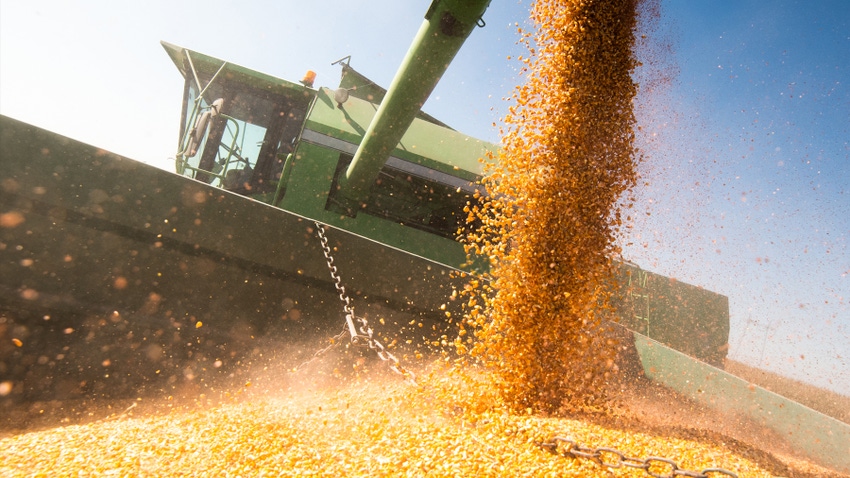August 18, 2023

The busy season of harvest is almost upon us, and most farmers are getting equipment ready and catching up on things they will have to put off until the crop is in. It’s easy to get caught up in the frenzy and forget to revisit agreements we have made during the year.
A farm lease is one agreement that should be reviewed before harvest by both tenants and landlords. Often, farm leases are negotiated in the winter before spring planting, and the terms are understood and clear in both a landlord’s and tenant’s mind. But if you’re like most people, the lease gets stored in a file and you get on with the business of farming.
With many forms of lease agreements — whether it is a form from Iowa State Extension, the Iowa Bar Association or others — key clauses could affect your actions during harvest. The complexity of farm leasing arrangements increases each year with new developments in technology, inputs, conservation and other evolving areas.
Who gets residue?
For instance, in Iowa, who has the right to bale stalks or take crop residue? A landowner recently asked me this question. Last year, his tenant chopped and baled the cornstalks to use in the tenant’s livestock operation. The landowner and tenant never put anything in writing, nor discussed the issue. But the landowner is concerned with his overall conservation plan.
If the lease is silent, Iowa law states that the person in possession of farmland (the tenant, in this case) is entitled to the aboveground residue of the plant. If a landlord wants a different arrangement, he or she needs to specify it in writing. In 2010, the Iowa Legislature passed Iowa Code 562.5A relating to crop residue. The law states that a farm tenant may take “any part of the aboveground part of the plant associated with a crop, at the time of harvest or after the harvest” until the lease is terminated.
Other things to consider are the rent payments and harvest information due to a landowner. If your lease is a crop-share lease, you may need to start compiling and organizing costs and information, so the postharvest project isn’t so overwhelming.
Have you read the “additional terms” portion of your lease to determine if there was a specific agreement with the landlord regarding conservation improvements, mowing, etc.
What about access?
Harvest also is a good time to talk about access to farmland and the legal rights of landowners and tenants. Recently, I received a question from a reader with a land access issue.
For many years, the reader rented about 3 acres to a neighboring farmer to give that farmer access to a field he was farming in exchange for a rental payment on those 3 acres. The access agreement between the reader and the farmer was part of the lease as a “right of way” clause.
The neighboring farmer recently sold his property, and the new owner will not agree to pay the reader through the lease to access the farmland. The reader’s question was whether or not he had to provide the same access to the new owner without any payment.
The first question to address is whether the parcel the new owner is trying to access is landlocked. If the parties can’t come to a voluntary easement agreement, the Iowa Code provides options. Iowa Code 6A.4, among other things, grants owners of landlocked parcels a right of way through “adjacent” private land if they initiate a condemnation proceeding seeking access through the “nearest feasible route.”
In a recent Iowa Court of Appeals case, Finnegan v. Dickson, the court found that owners of a landlocked parcel had a right to condemn a new access road because they did not have an existing route by which to access a public road from their property.
However, the court reminded us that landlocked owners have to propose an access route that is either “located adjacent to a division, subdivision or forty line, and which was the nearest feasible route to an existing public road or … along a route established for 10 years or more by an easement, or by use and travel by the owner of the property and the general public.”
The second question — if the land the owner is seeking access to is not landlocked — depends on whether the person seeking access has essentially established an easement by using and accessing the property. This is called an “easement by prescription” and is similar to the concepts of “boundary by acquiescence” and “adverse possession.”
To successfully claim a prescriptive easement, the claimant must show he or she used the access route under a claim of right of title — openly, notoriously, continuously, and hostilely for 10 years or more. This can be a hard concept to prove.
So, if the farm is not landlocked or the access route hasn’t been established by use for 10 years or more, or the property has no other legal claim, the landowners would need to come to a voluntary agreement regarding access and any payment associated with that access.
If you’re like my dad, some of your most brilliant ideas are thought of in the tractor during harvest. I am joking, but my advice is to use the time to think through your postharvest plans. It’s never too early to think about tax planning, succession planning, estate planning or end-of-year purchases. Use the time to think through legal issues you need to resolve and make an appointment to talk with your attorney or accountant about planning issues after harvest.
About the Author(s)
You May Also Like






